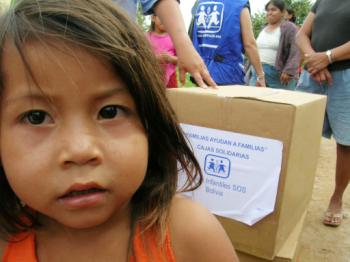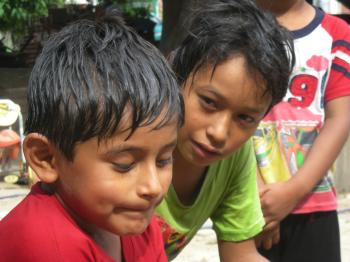In Bolivia’s wealthiest department, infrastructure is still lacking for many

Little girl at the SOS Social Centre (photo: F. Espinoza)
Santa Cruz is the capital of the eastern Bolivian province of the same name and is located at an altitude of 440 metres on the banks of the Piray River. Its tropical climate is ideal for growing coffee, sugar cane and tobacco. As a result of the discovery of oil, natural gas and iron ore, Santa Cruz has become the country’s wealthiest and most modern city, which has attracted many migrants from the surrounding highlands. In fact, it is the region with the greatest number of migrants in all of Bolivia. Today, Santa Cruz is a large city with a population of 1.6 million, while just three decades ago it was only around 260,000. This rapid urbanisation has contributed to an increase in social problems such as poverty, unemployment and lack of infrastructure.
The divide between the rich and the poor is particularly stark in this comparatively well-off region. Although the overall poverty rate is lower in Santa Cruz than in the rest of Bolivia, there are still an estimated 500,000 people living in extreme poverty, which means that their basic needs are not fulfilled. To experience poverty during childhood has a substantial impact on a child's adult life. Very often, the disadvantages faced during early childhood can result in subsequent economic failure or a lack of personal success later in life.
Children´s education must be ensured to allow for their success as adults
Primary school attendance in Santa Cruz is also higher than the national average, but there are still some 40,000 children between the ages of six and thirteen that do not attend school. These children are usually from low-income families where even the youngest members are expected to contribute financially. In many cases the parents are rural migrants who have not completed education either.
The demand for infrastructure is ever increasing due to the steep population growth, and new school buildings and teachers are needed. While government initiatives are sure to improve the situation in the long run, no time should be lost in supporting families experiencing poverty and social exclusion.
What we do in Santa Cruz

SOS Children’s Villages has been active in Santa Cruz since 1994.
Strengthening families: The social centres provide family strengthening programmes that aim to support the community and alleviate hardship. The centres include a health centre and a childminding programme. This allows working parents or single mothers to leave their children in safe hands while they are out making a living.
Care in families: For children who are no longer able to live with their parents, 13 SOS families can provide a loving home. They live with their brothers and sisters and are affectionately cared for by their SOS mother. The children attend the local schools alongside children from the neighbourhood: this way they make friends and become part of the community.
Supporting young people: The SOS Youth Programme in town provides support to young people for the duration of their secondary education and/or vocational training. They live in shared housing where they can prepare for independent life and plan their future, while supported by qualified youth counsellors.